Conquering Winter’s Wrath: A Safe and Savvy Guide to Using Ice Melt
Ah, winter. A time of glistening snow, cozy nights by the fireplace, and...treacherous ice patches!
While the beauty of a winter wonderland is undeniable, navigating those slippery surfaces can be a recipe for disaster. That's where ice melt comes into play! It's the seemingly simple solution to keeping your walkways and driveways safe and accessible.
But like any chemical product, ice melt demands respect. Mishandling it can be problematic for your surfaces, pets, and even yourself.
Here at Zimmerman Mulch, we understand your concerns. You want to maintain a safe haven during icy conditions but also protect your precious property and any furry companions you may have.
Fear not, intrepid winter warriors! This guide will equip you with the knowledge and tips to apply ice melt confidently, ensuring a safe and smooth winter season.
Table Of Contents
Understanding Your Ice Melt Ally
Before diving into the nitty-gritty of safety, let's explore what ice melt is all about.
In short, it's a chemical concoction designed to melt ice. Unlike basic rock salt, modern ice melts often boast additional ingredients that enhance their effectiveness at lower temperatures.
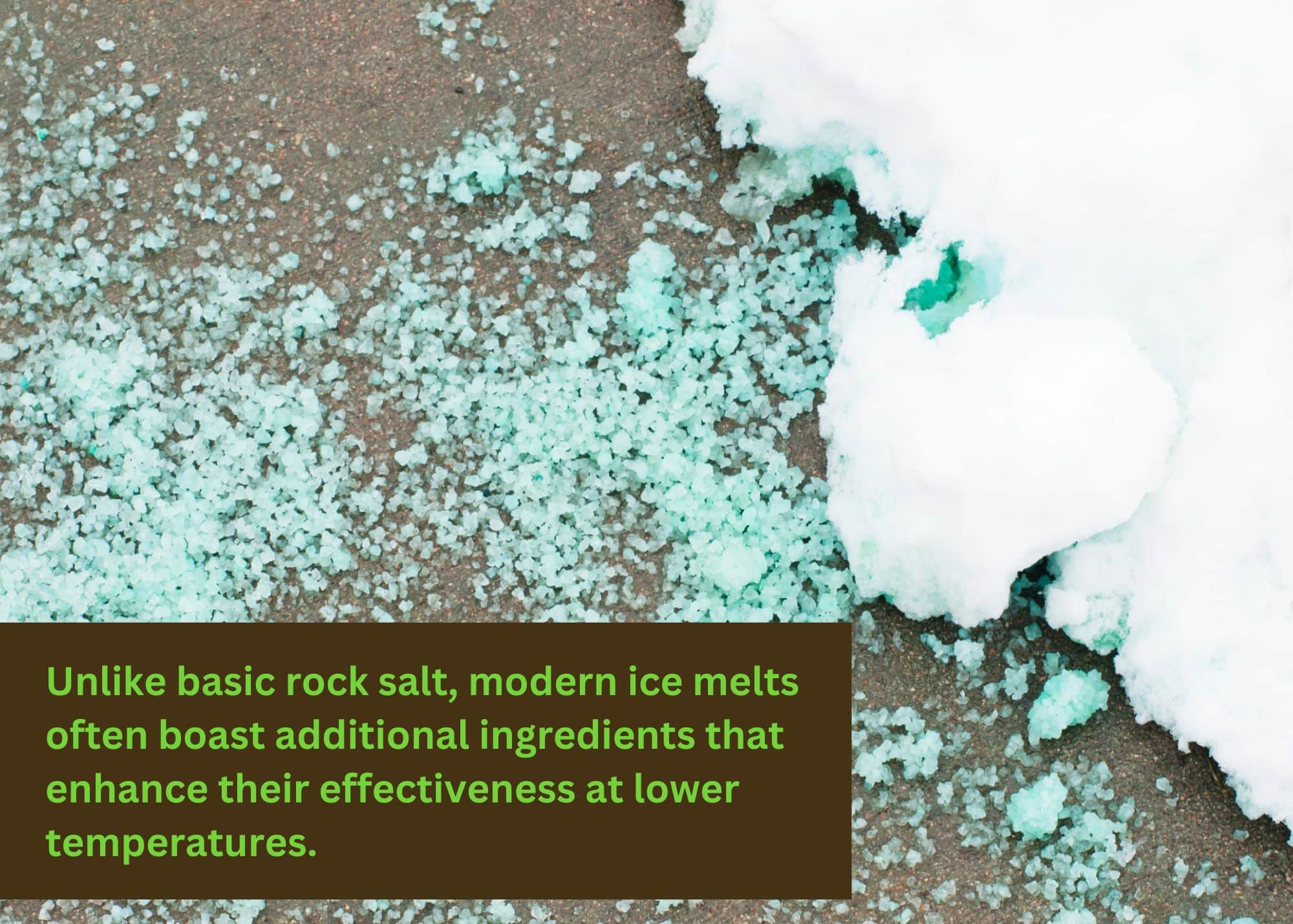
However, not all ice melts are created equal. Today's market offers a diverse selection catering to different needs, including pet safety and environmental concerns. When choosing your ice melt, consider these factors:
- Environmental impact: Does it pose a threat to plant life or waterways?
- Temperature range: Does it function effectively in your region's typical winter temperatures?
- Surface compatibility: Is it suitable for treating concrete, asphalt, wood, or metal surfaces?
Navigating the Ice Melt Maze: Potential Hazards
While ice melt serves a vital purpose, it's not without its quirks. Here are some key hazards to keep in mind:
- Surface Showdown: Certain ice melts, particularly those containing rock salt or calcium chloride, can be quite corrosive. Improper application can damage concrete, metal, asphalt, and wooden surfaces.
- Pawsitively Dangerous: Our furry friends are more susceptible to the chemicals found in ice melts. Ingestion can cause stomach upset, while prolonged contact can lead to skin irritation or even burns on their delicate paws.
- Human Hang-Ups: Although rare, ice melt chemicals can cause skin irritations or burns in severe cases. It's always best to err on the side of caution and wear protective gear when handling these products.
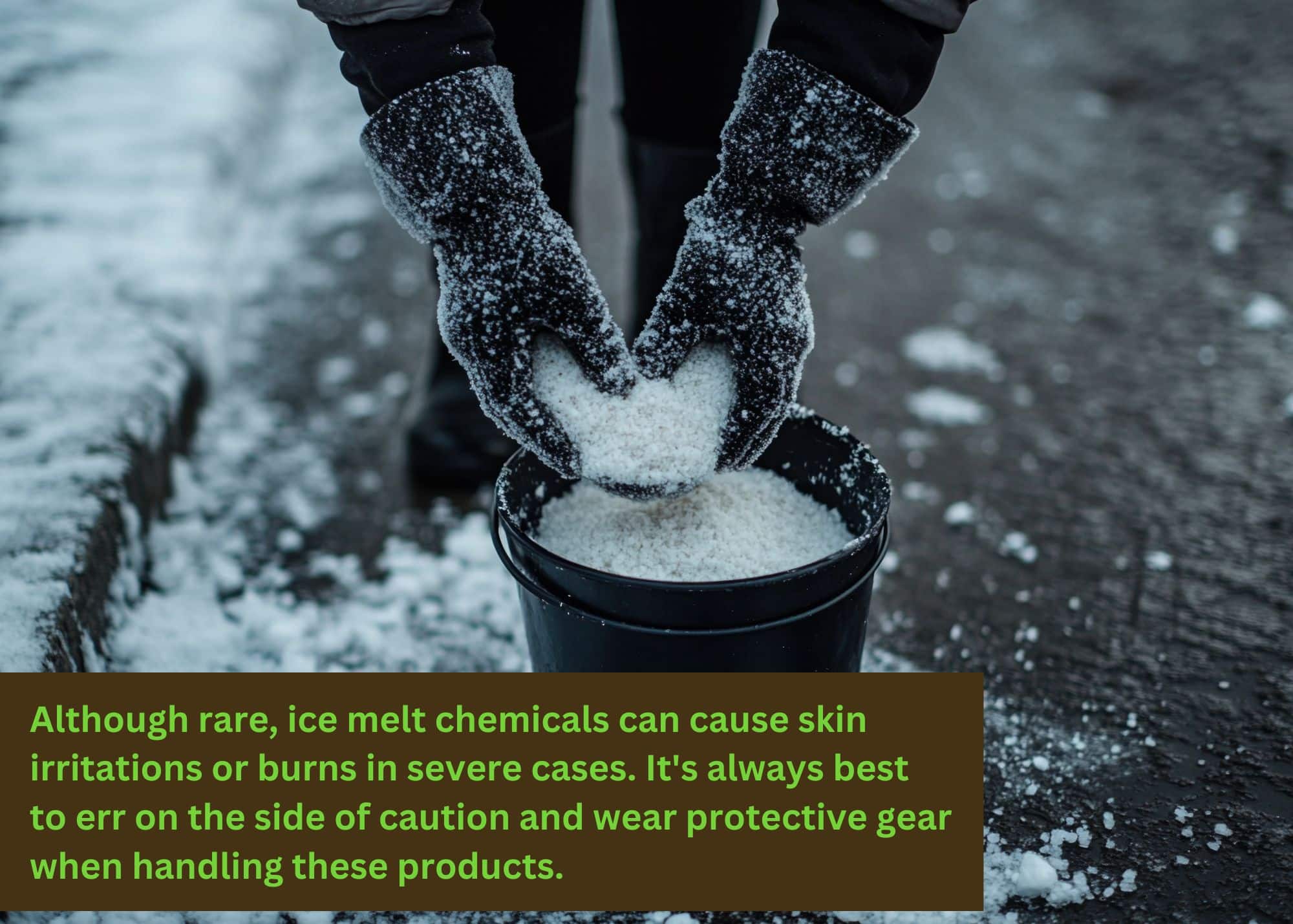
Mastering the Art of Ice Melt Application
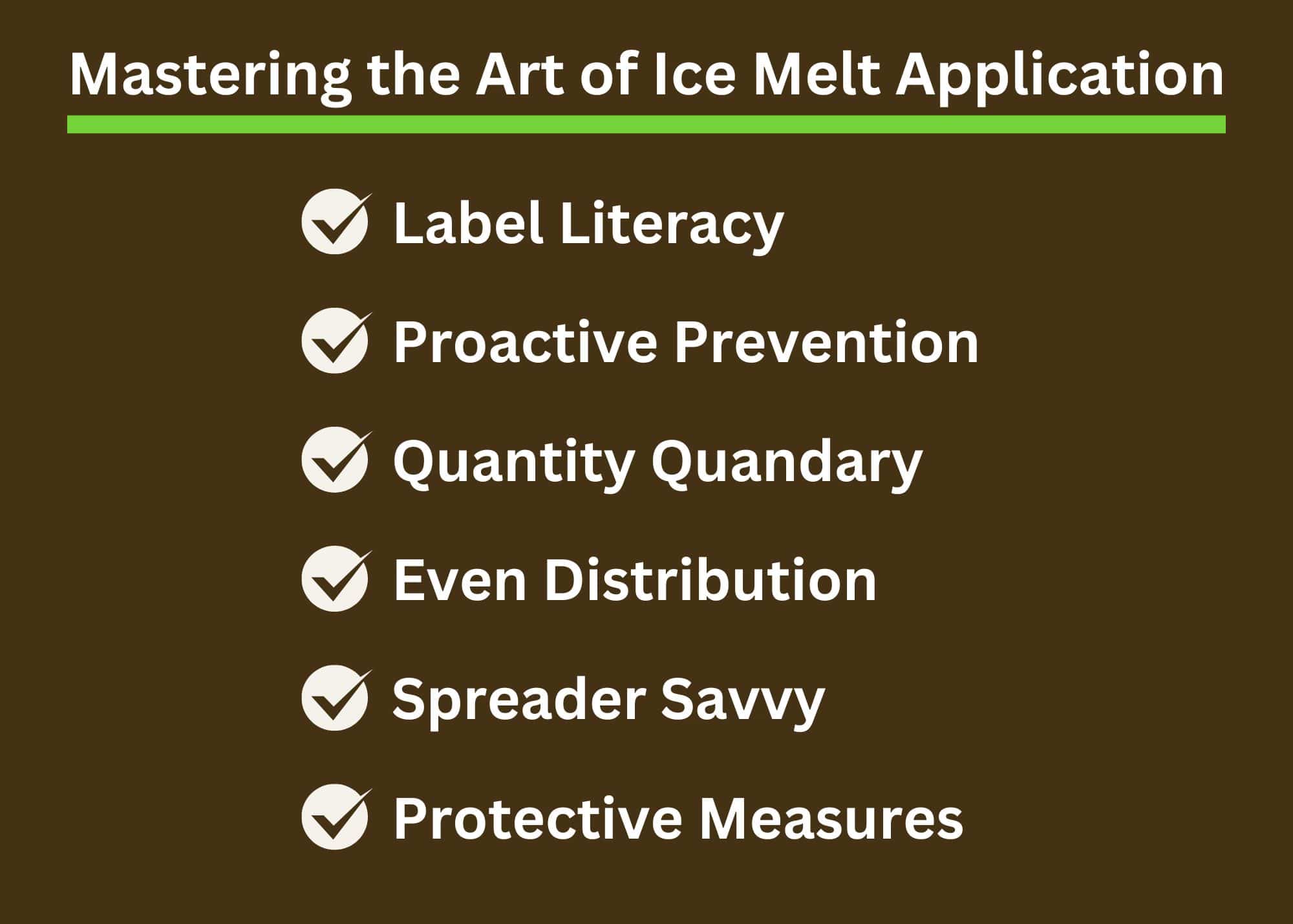
Proper application is the key to maximizing ice melt's effectiveness while minimizing risks. Here's how to become an ice melt maestro:
- Label Literacy: Begin by carefully reading the instructions on your ice melt product. Understanding the specific chemicals involved and their application methods can prevent mishaps.
- Proactive Prevention: If snowfall or icy conditions are expected, consider applying a thin layer of ice melt. This preemptive strike helps prevent ice formation and enhances the effectiveness of subsequent applications.
- Quantity Quandary: Remember, more isn't always merrier! Over-applying ice melt can do more harm than good. Follow the manufacturer's recommended amount to avoid waste and potential surface damage.
- Even Distribution: Ensure the ice melt is scattered uniformly across the surface. This prevents concentrated areas that could react with materials or skin.
- Spreader Savvy: Consider using a spreader for larger areas. This tool not only facilitates even application but also keeps your hands safe from direct contact with the chemicals.
- Protective Measures: Don't forget to wear gloves and safety glasses! These simple steps shield your skin and eyes from irritants. Always wash your hands thoroughly after handling ice melt.
Keeping Your Furry Friends Safe
Our pets deserve just as much protection as our surfaces. Here's how to keep them safe during ice melt season:
- Pet-Friendly Picks: Look for ice melt products labeled as pet-safe. These varieties typically avoid harmful chemicals like calcium chloride.
- Pawsome Pampering: After walks in treated areas, be sure to wipe your pet's paws with a damp cloth to remove any residual ice melt.
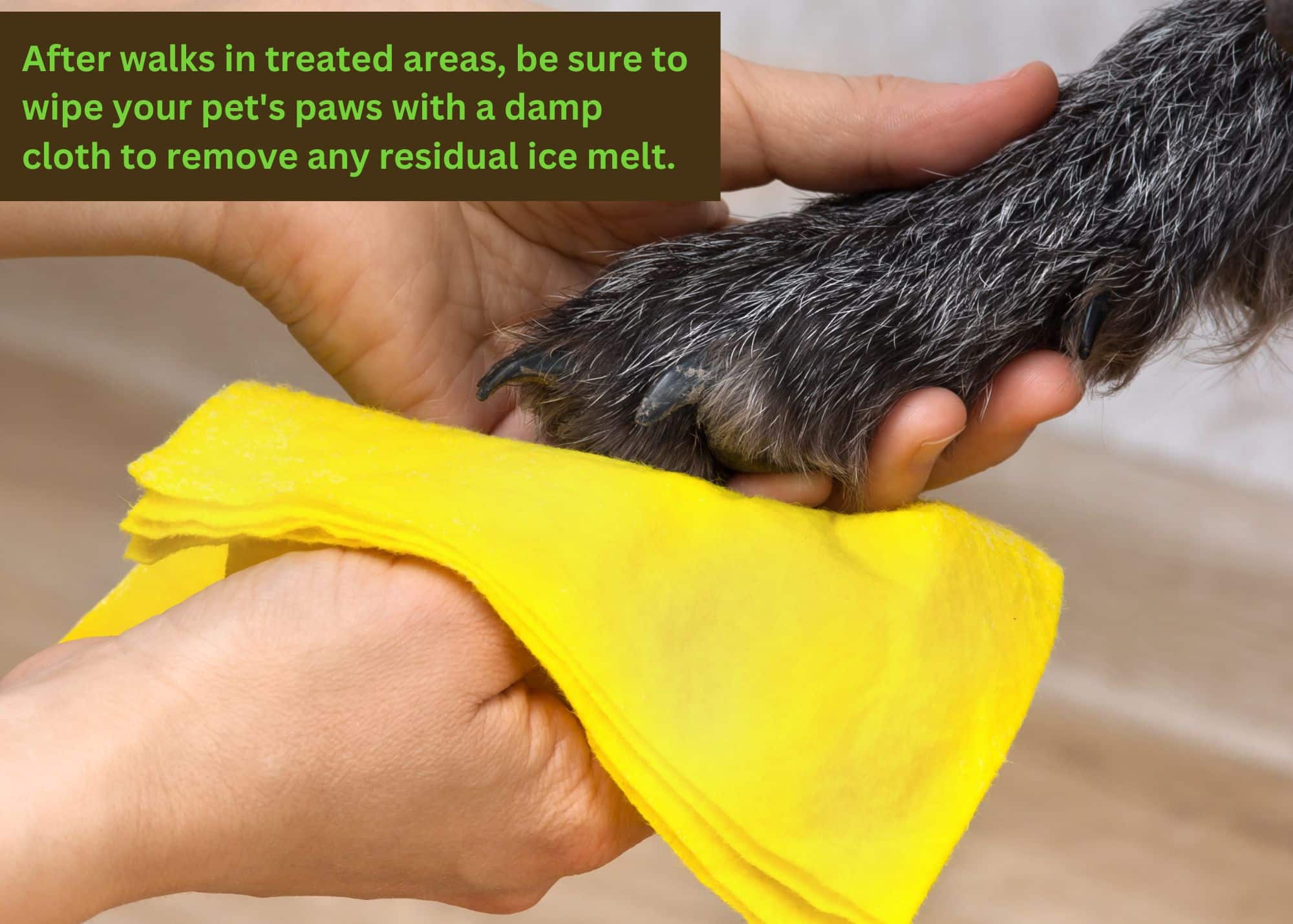
- Label Law Enforcement: Always scrutinize the product label's ingredients list to ensure the absence of sodium chloride, potassium chloride, calcium chloride and magnesium chloride—all of which are highly toxic to dogs if ingested.
Spills and Chemical Burns: Taking Control
Environmental Considerations
When using ice melt, it's crucial to consider its environmental impact. Some products can harm plant life and contaminate water systems, affecting aquatic life. Here's how to minimize your environmental footprint:
- Eco-Friendly Options: Whenever possible, opt for environmentally-friendly brands that promote biodegradability.
- Limit Use to Essentials: Only apply ice melt where absolutely necessary, particularly around plants and waterways.
- Proper Storage: Keep ice melt in sealed, secure containers when not in use to prevent accidental spills and environmental contamination.
Conclusion: Winter Confidence, Guaranteed
With these insights and safety tips, you can tackle winter hazards like a pro. Responsible use of ice melts protects you and your loved ones from accidents and preserves the integrity of your property and the environment.
Remember, safety is more than just avoiding slips; it's about making wise, informed choices that consider all potential risks.
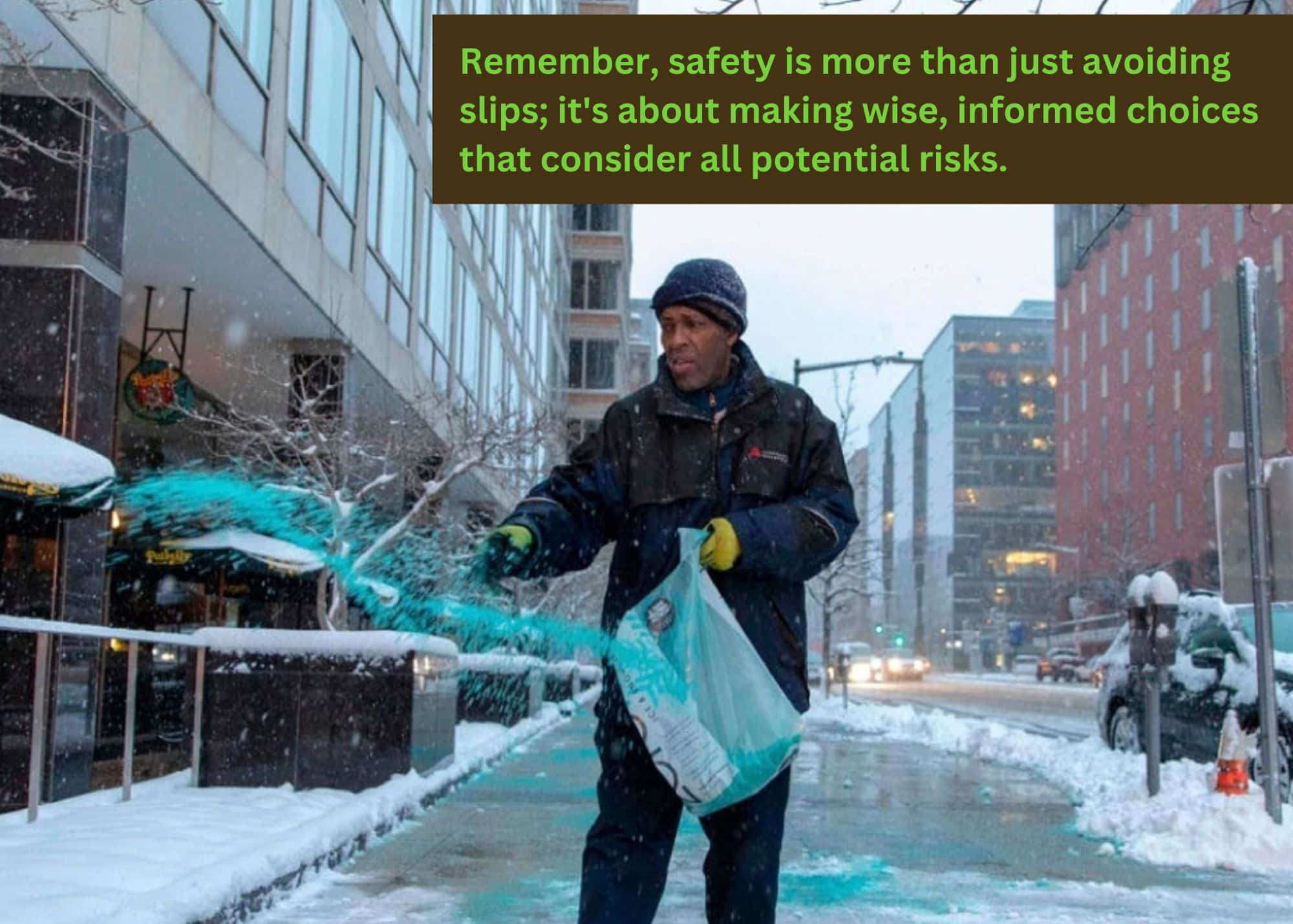
Let us help you navigate the cold season with confidence. You can browse our ice melt products online today. For more expert advice and access to reliable ice melt options, check out our blog posts on ice melt. We look forward to helping you make winter safer, every step of the way.






